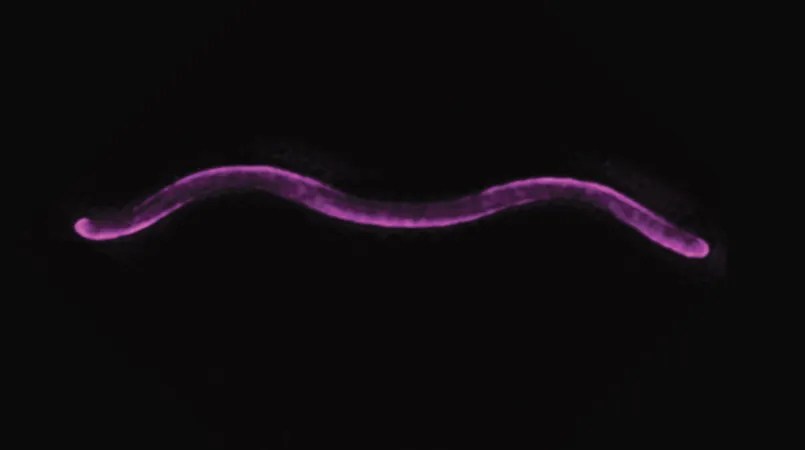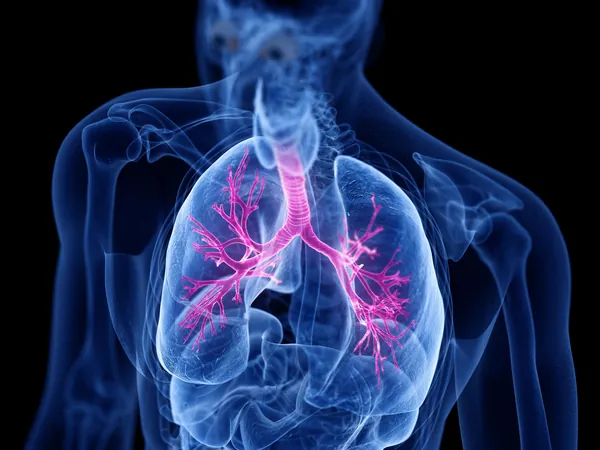
Groundbreaking Discovery Unravels Spiral Shape of Bacteria, Could Transform Disease Research!
2024-10-07
Author: Sarah
In an astounding exploration of microbial form, scientists have revealed new insights into the spiral shapes of certain bacteria and how these shapes influence their survival and pathogenicity. While most people associate bacteria with common shapes like spheres (coccus) and rods (bacillus), many bacteria exhibit curved shapes that play critical roles in their movement, virulence, and overall environmental adaptability.
Understanding the curvature of bacteria is pivotal for various reasons, including their strategies for surface colonization and motility in thick environments. This has direct implications for diseases caused by bacteria such as Vibrio cholerae and Helicobacter pylori, notorious pathogens responsible for significant human health challenges.
A team of researchers has made remarkable progress by elucidating the mechanism behind the spiral-shaped bacterium Rhodospirillum rubrum, which is not only prevalent in diverse environments but also holds significant biotechnological promise. This bacterium is known for its abilities to utilize carbon monoxide, fix nitrogen, and produce hydrogen and substances that can be used in bioplastics.
Published in the prestigious journal Nature Communications, their study titled "An outer membrane porin-lipoprotein complex modulates elongasome movement to establish cell curvature in Rhodospirillum rubrum," sheds light on a novel process determining cell shape based on outer membrane proteins.
The researchers discovered that in Rhodospirillum, two distinct porins—proteins functioning primarily for nutrient exchange—are unusually organized in a helical formation along the outer curvature of the cell. These porins are integrated with a connecting protein called PapS. Disrupting PapS or its interaction with the porins led to the bacteria adopting straight shapes instead of spirals.
Specifically, the team found that the porins Por39 and Por41 align in a helical ribbon at the outer edge of the cell and recruit PapS. When PapS is inactive or misaligned, the result is a loss of curvature. This unexpected configuration appears to serve a dual purpose; not only do these porins facilitate nutrient transfer, but they also regulate the growth machinery responsible for cell elongation.
Martin Thanbichler, a microbiology professor at the University of Marburg in Germany, elaborated on the implications of their findings. He emphasized that these porins and PapS collaborate to constrain the growth mechanism within a "molecular cage," guiding it to elongate more on the outer edges, thus creating the spiral shape. This contrasts with straight bacteria, like E. coli, where growth is uniform across the cell.
The potential applications of this research extend far beyond mere curiosity. As Thanbichler notes, the researchers now have the opportunity to engineer the shape of R. rubrum. This manipulation could furnish valuable insights into how different shapes enhance bacterial adaptation, ecological interactions, and the potential emergence of pathogenic traits.
Moreover, the study hints at a broader significance, suggesting that this discovery may apply to other bacterial species with similar curved shapes, expanding our understanding of microbial biology. This could open new avenues in research related to environmental microbiology, symbiotic relationships with plants, and even advancements in tackling bacterial diseases.
As we stand on the cusp of these revelations, the implications of manipulating bacterial cell shape are monumental, potentially leading to breakthroughs in ecology, biotechnology, and our fight against infectious diseases. Stay tuned for more updates on this transformative research!



 Brasil (PT)
Brasil (PT)
 Canada (EN)
Canada (EN)
 Chile (ES)
Chile (ES)
 España (ES)
España (ES)
 France (FR)
France (FR)
 Hong Kong (EN)
Hong Kong (EN)
 Italia (IT)
Italia (IT)
 日本 (JA)
日本 (JA)
 Magyarország (HU)
Magyarország (HU)
 Norge (NO)
Norge (NO)
 Polska (PL)
Polska (PL)
 Schweiz (DE)
Schweiz (DE)
 Singapore (EN)
Singapore (EN)
 Sverige (SV)
Sverige (SV)
 Suomi (FI)
Suomi (FI)
 Türkiye (TR)
Türkiye (TR)